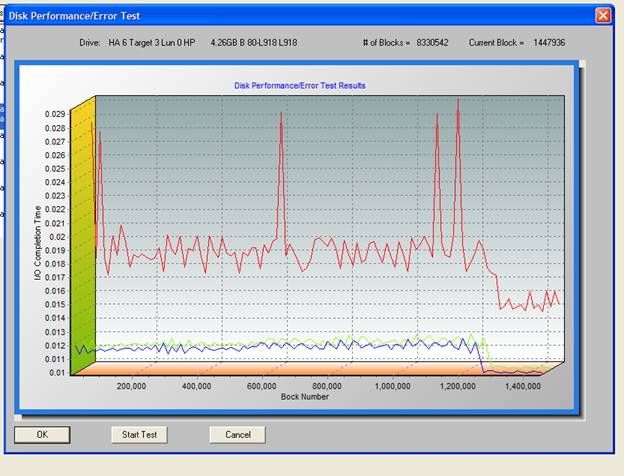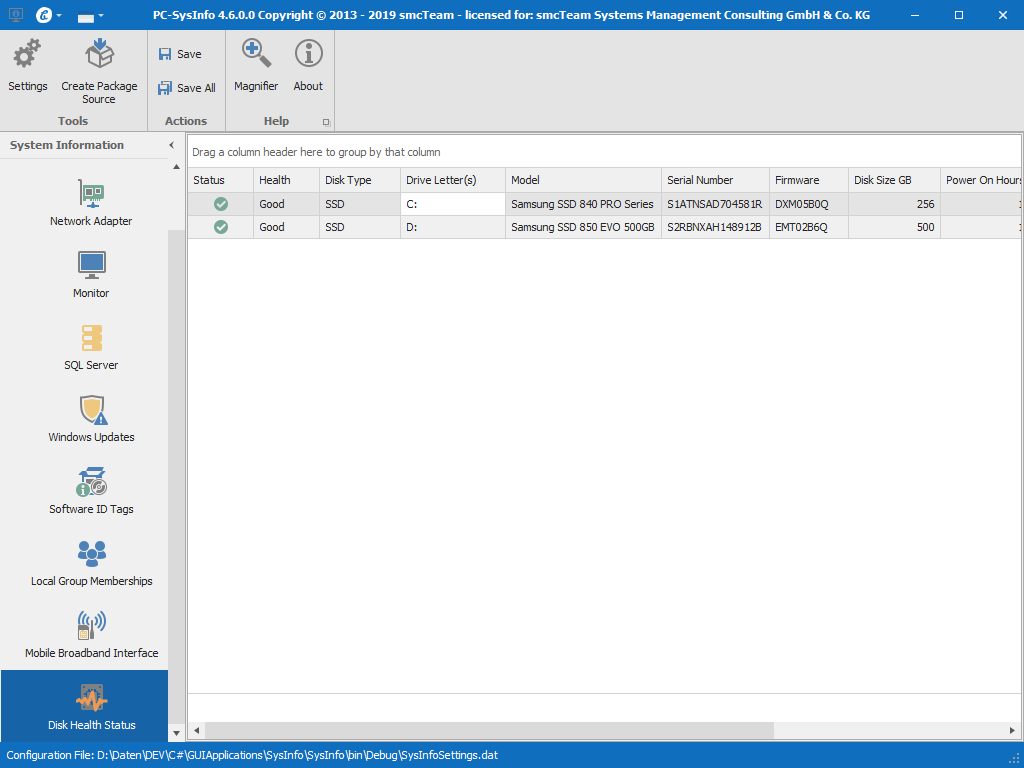

SMART Attributes Data Structure revision number: 16 Recommended polling time: ( 215) minutes. SMART overall-health self-assessment test result: PASSED SMART support is: Available - device has SMART capability. SATA Version is: SATA 3.0, 6.0 Gb/s (current: 3.0 Gb/s) Sector Sizes: 512 bytes logical, 4096 bytes physicalĭevice is: In smartctl database ĪTA Version is: ATA8-ACS T13/1699-D revision 6 Model Family: Seagate Samsung SpinPoint M8 (AF) Since smartctl is very verbose, we’ve filtered the following output to highlight the most relevant information: # smartctl -all /dev/sdc Looking for the same information on a virtual disk does not make sense, and it’s not possible.

Let’s see an example using the –all flag, which prints all SMART information about a physical disk. Attribute individualism is important because drive architectures vary from model to model.

Disk health series#
SMART technology includes a series of attributes or diagnostics chosen for each drive model. The difference between NAME and KNAME is that the former indicates the device name, while the latter means the internal kernel device name. This tree-like view of partitions is quite intuitive. In this case, /dev/sda contains an LVM with encrypted partitions. Then, for each disk, we can list its partitions with lsblk, for example: $ lsblk /dev/sda -o NAME,KNAME,FSTYPE,MOUNTPOINT,SIZE The detailed information provided by lshw helps us not to be mistaken. First, let’s identify the disks via lshw: # lshw -class disk There are several methods to find all storage devices. Let’s look at some examples: /dev/hd, /dev/sd, /dev/vd, /dev/nst*, /dev/sg*, /dev/twe, and so on. Seeing 7 (reallocated sectors) being at 0 is a bit unexpected for me.In the rest of this tutorial, we need to know which device files identify our disks and their partitions. In output of smartctl I saw log with errors and you can see them under 187 (uncorrected errors) which indicates how much data I really lost. Though it states "GOOD" (Samsung HD103UJ). It produce also "Pretty" and "Good" columns alongside with Overall status: Bad Sectors: 0 sectorsĪverage Powered On Per Power Cycle: 1.3 days

I found skdump(part of libatasmart) which I able to understand. gnome-disks pulls in GNOME which nowadays cannot live without NetworkManager. Output of smartctl is hard to read for me.


 0 kommentar(er)
0 kommentar(er)
